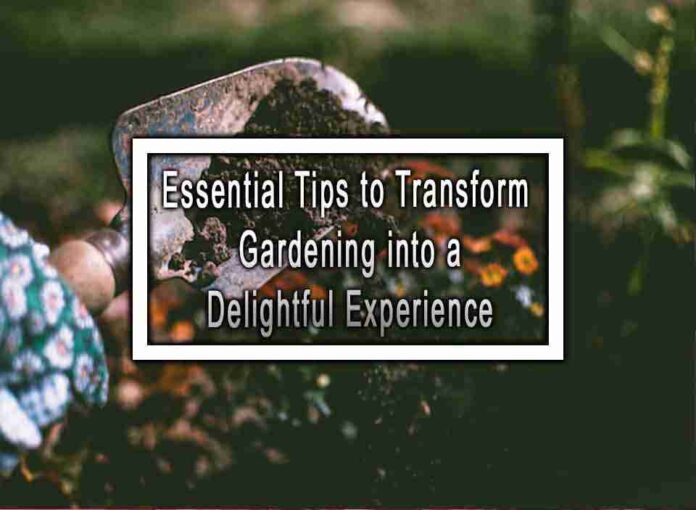1. Start with a Plan
Before diving into gardening, take some time to plan and design your garden. Consider factors such as available space, sunlight, soil quality, and the types of plants you want to grow. Having a clear plan will help you stay organized and ensure that your garden thrives.
2. Create a Comfortable Space
Make your gardening experience enjoyable by creating a comfortable and inviting space. Set up a seating area or a small patio where you can relax and take breaks. Add some decorative elements, such as colorful pots, garden ornaments, or wind chimes, to create a visually appealing environment.
3. Choose Plants Wisely
Select plants that are suitable for your climate and the specific conditions of your garden. Consider factors like sunlight requirements, water needs, and maintenance level. Opt for a mix of flowers, herbs, vegetables, and shrubs to add variety and create a balanced and beautiful garden.

4. Start Small
If you’re new to gardening, start with a small area or a few containers. It’s better to focus on a manageable space and gradually expand as you gain more experience and confidence. Starting small allows you to learn and adapt without feeling overwhelmed.
5. Embrace Diversity
Aim for a diverse garden by incorporating a variety of plants. Diversity not only adds visual interest but also promotes a healthier ecosystem. Different plants attract a range of beneficial insects, birds, and butterflies, creating a balanced and thriving environment.
6. Practice Regular Maintenance
Set aside dedicated time for garden maintenance to keep it looking its best. This includes watering, weeding, pruning, and fertilizing as needed. Regular maintenance prevents problems like overgrowth, pests, and diseases, and helps you stay connected to your garden.
7. Get Creative with Design
Gardening is an opportunity to express your creativity. Experiment with different layouts, plant combinations, and color schemes to create visually pleasing arrangements. Consider using containers, trellises, or raised beds to add depth and dimension to your garden.
8. Make it a Learning Experience
Gardening is a continuous learning process. Take the time to learn about different plants, gardening techniques, and best practices. Join local gardening clubs, attend workshops, or read books and online resources to expand your knowledge and enhance your gardening skills.
9. Involve the Senses
Make your garden a sensory delight by incorporating plants that engage all your senses. Choose fragrant flowers, herbs, or shrubs to enjoy beautiful scents. Include plants with interesting textures or variegated foliage. Consider adding wind chimes, bird feeders, or a small water feature to create soothing sounds.
10. Enjoy the Journey
Gardening is not just about the end result; it’s about the process and the joy it brings. Embrace the connection with nature, the satisfaction of seeing your plants grow, and the beauty of the changing seasons. Take time to appreciate and enjoy the little moments in your garden.
Remember, gardening is a personal and fulfilling experience. Adapt these tips to suit your preferences and style, and let your garden be a reflection of your personality and creativity.










